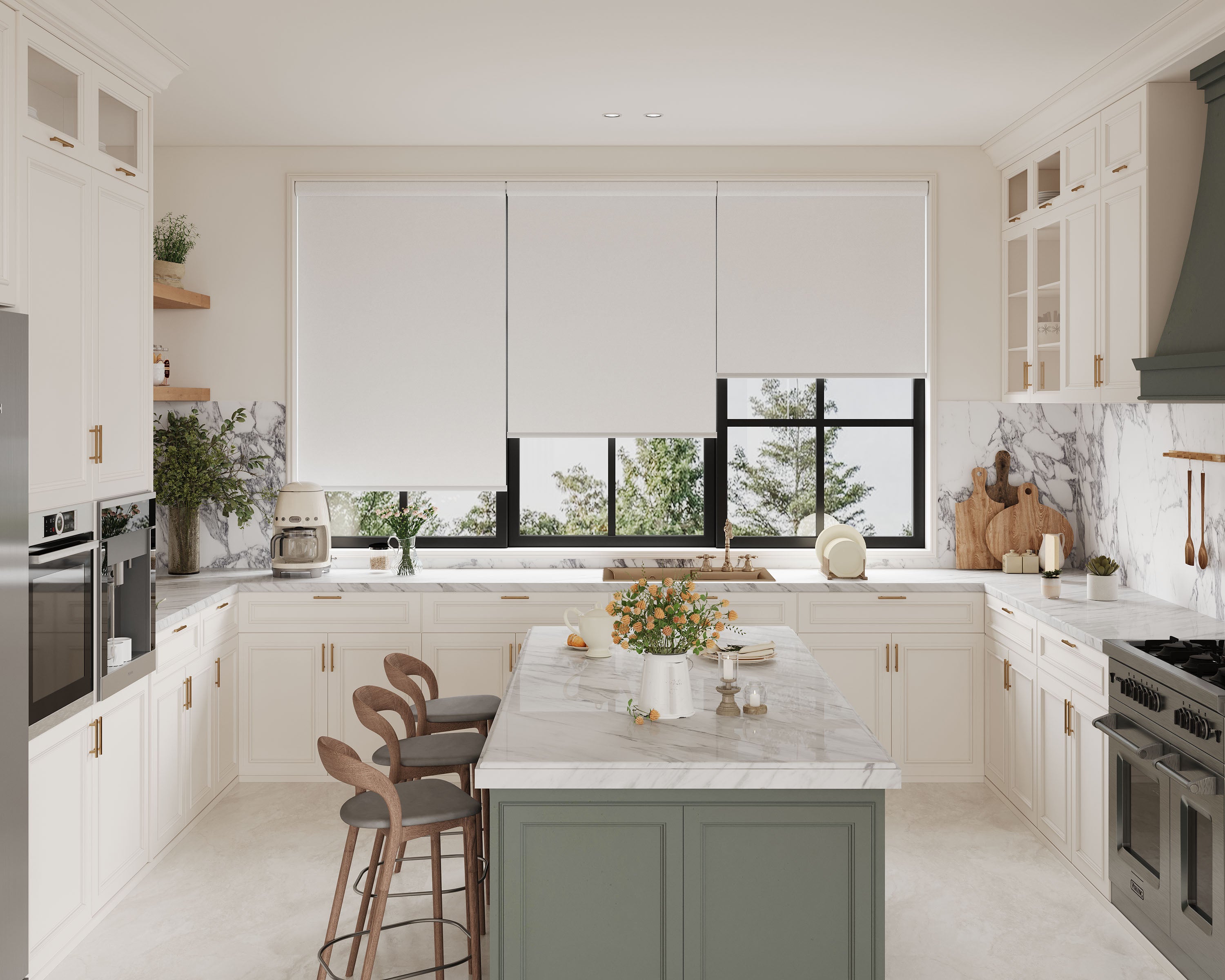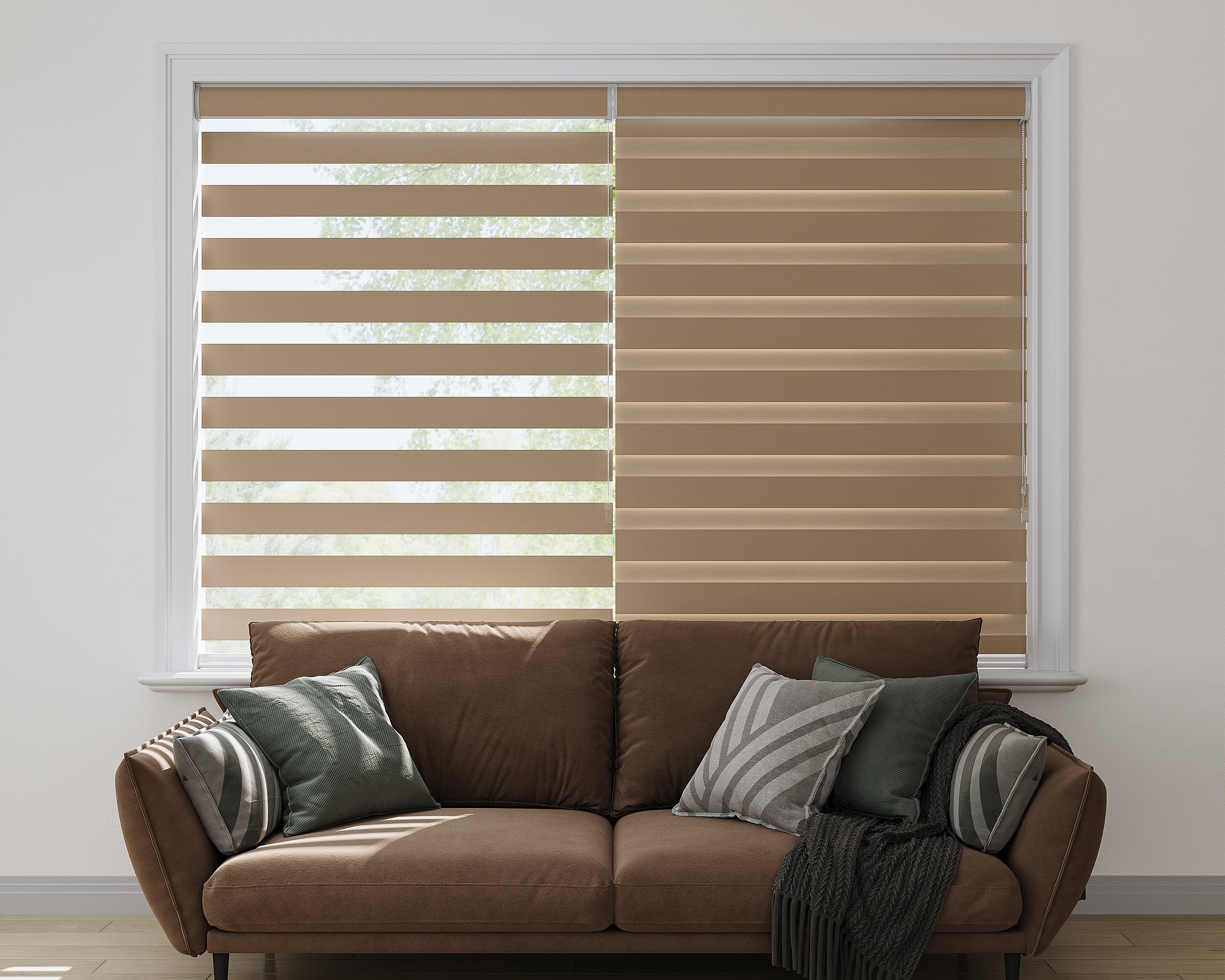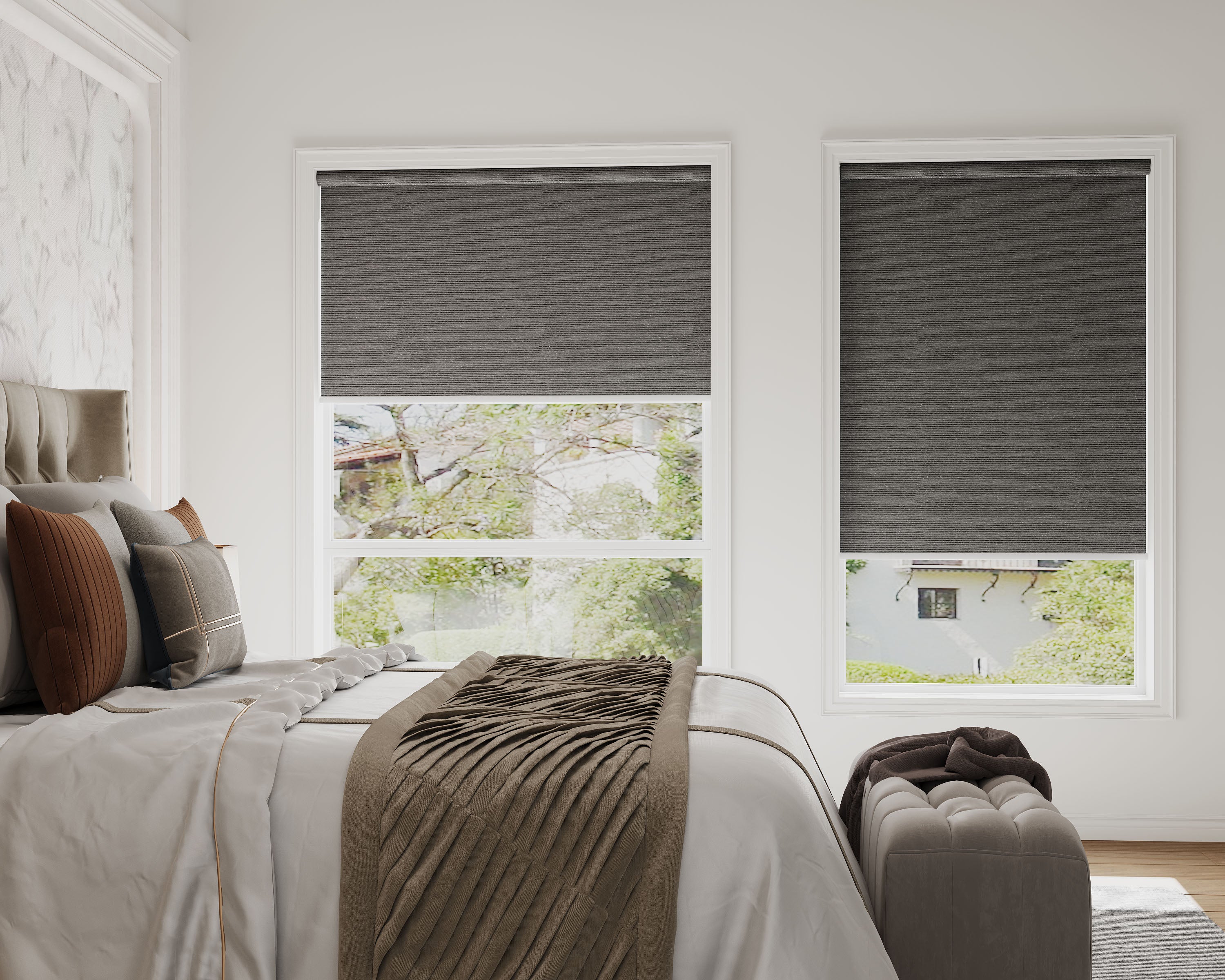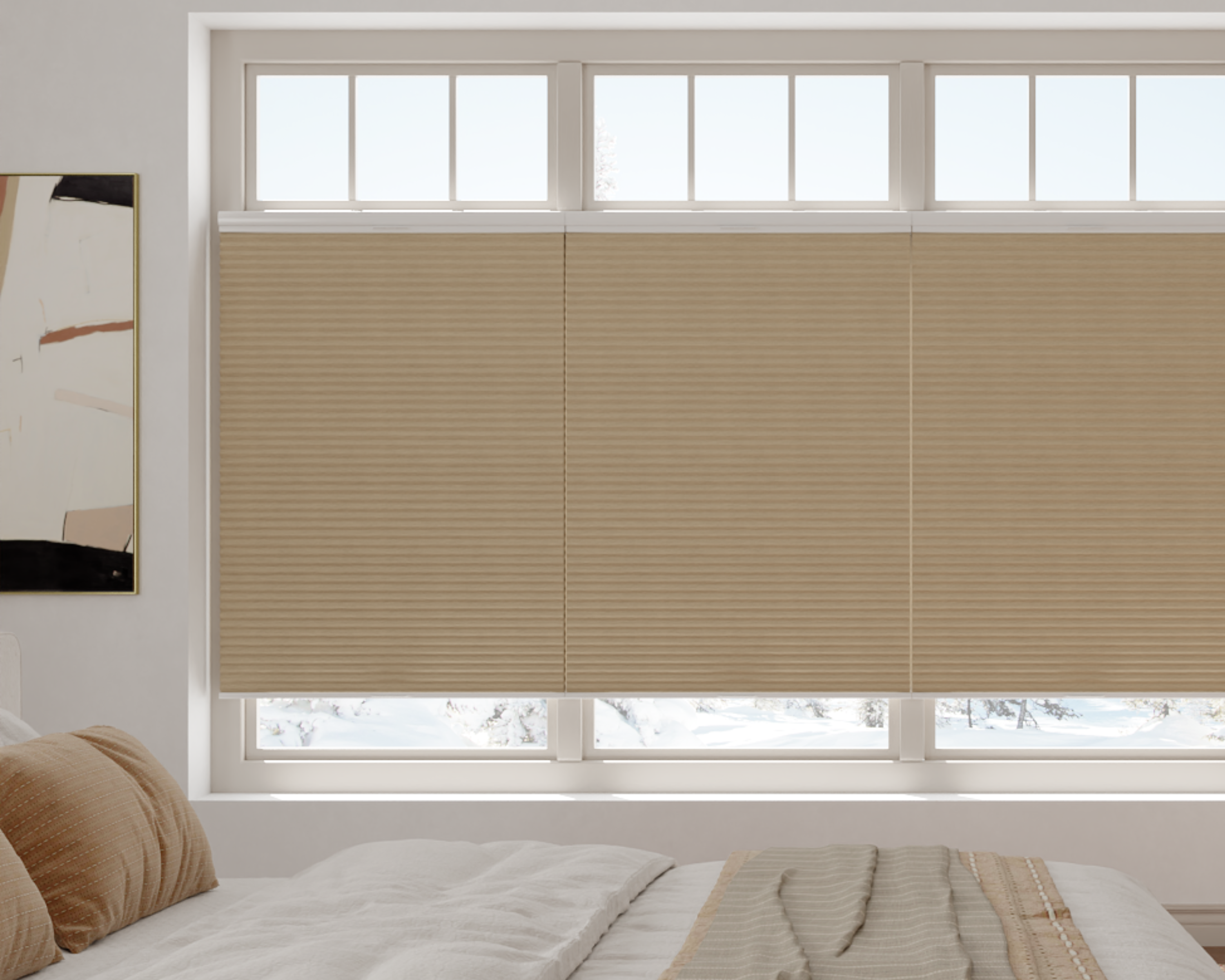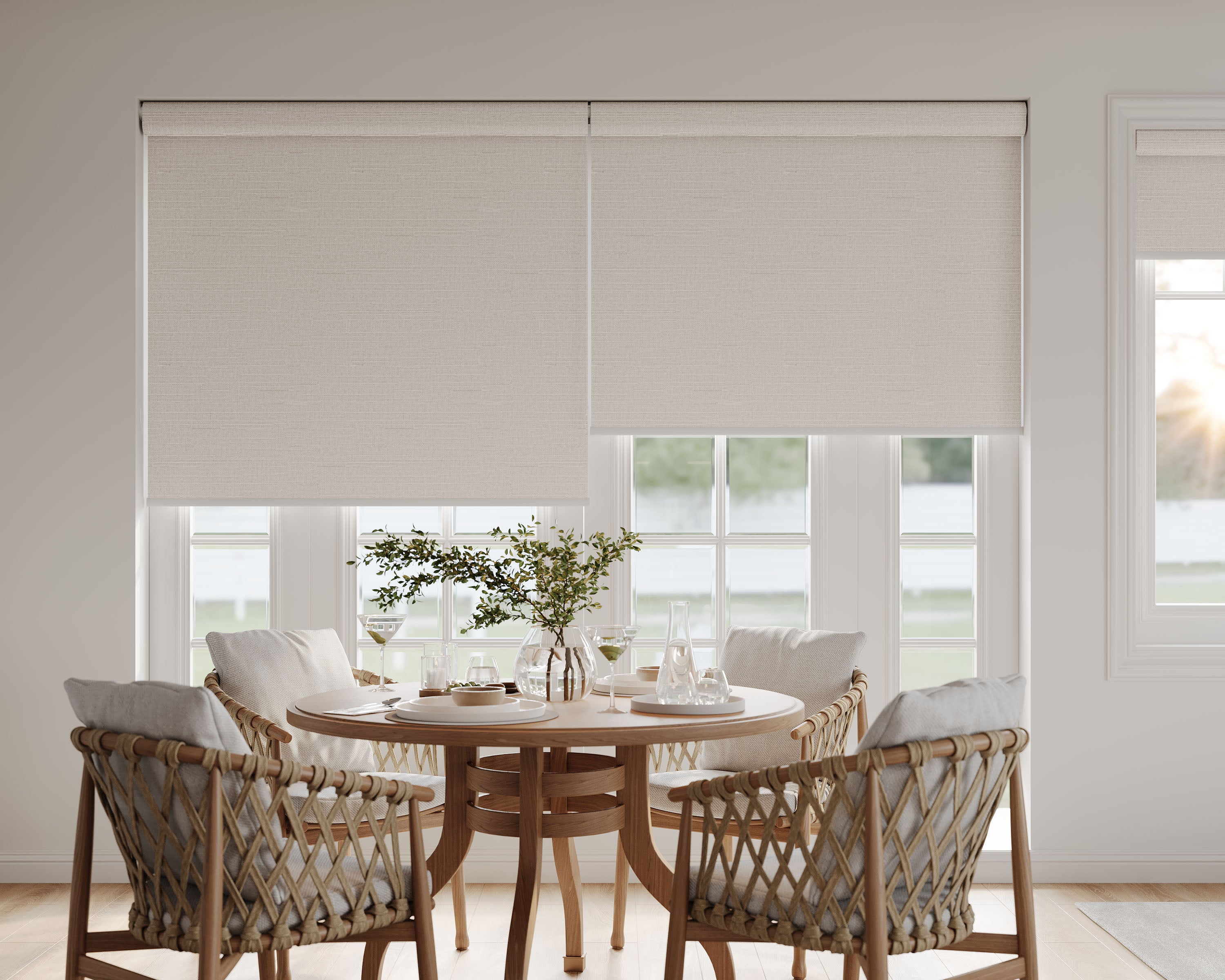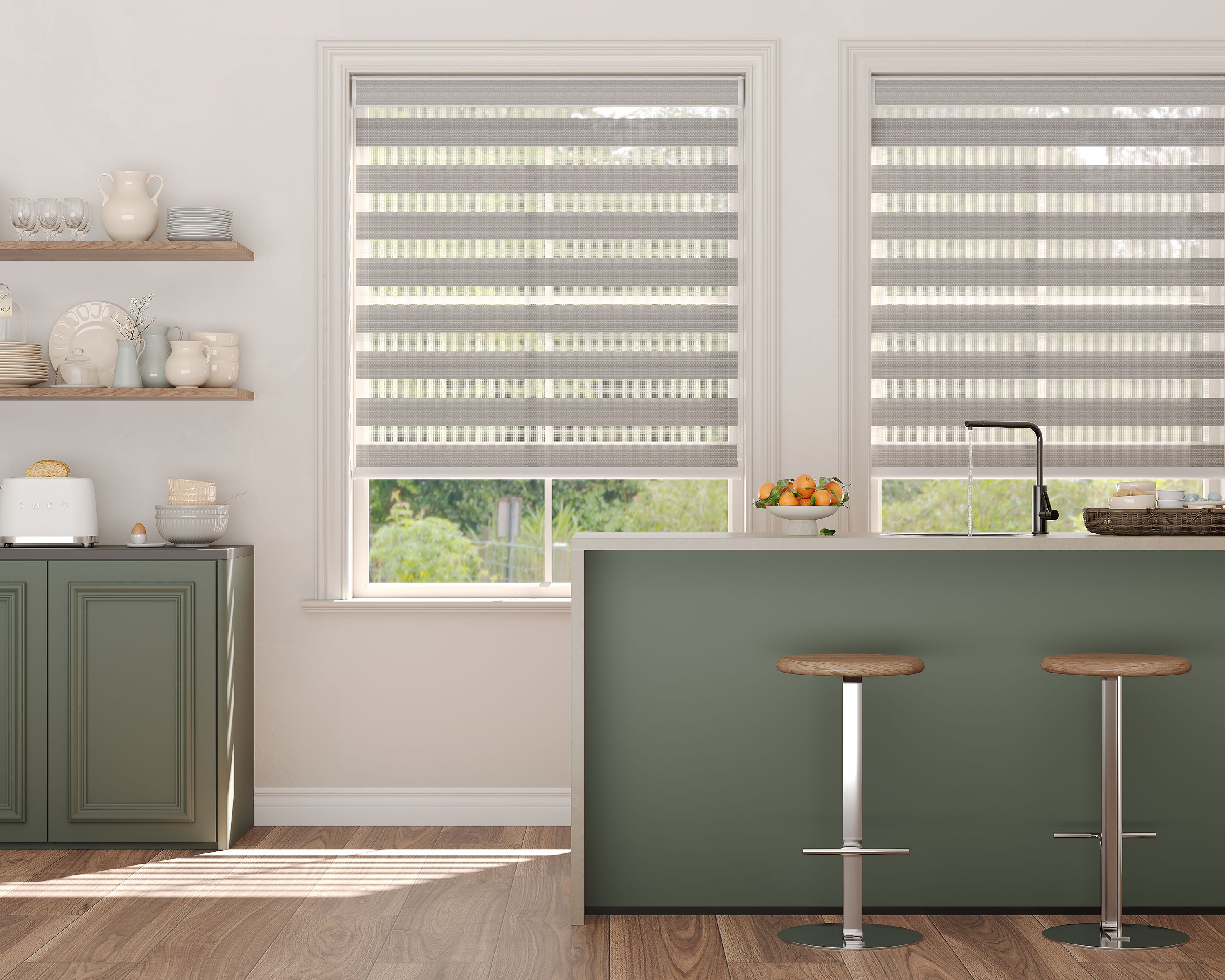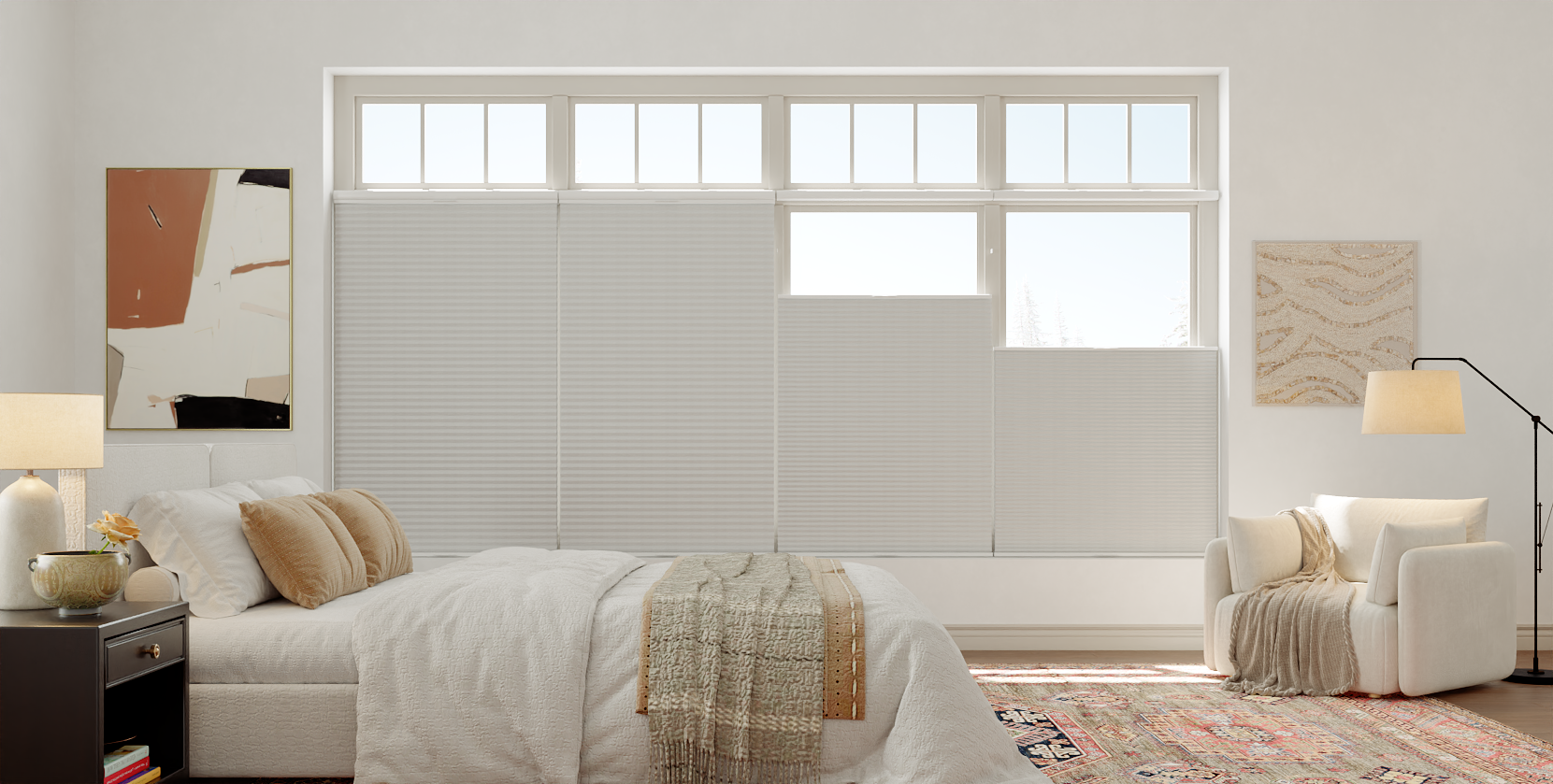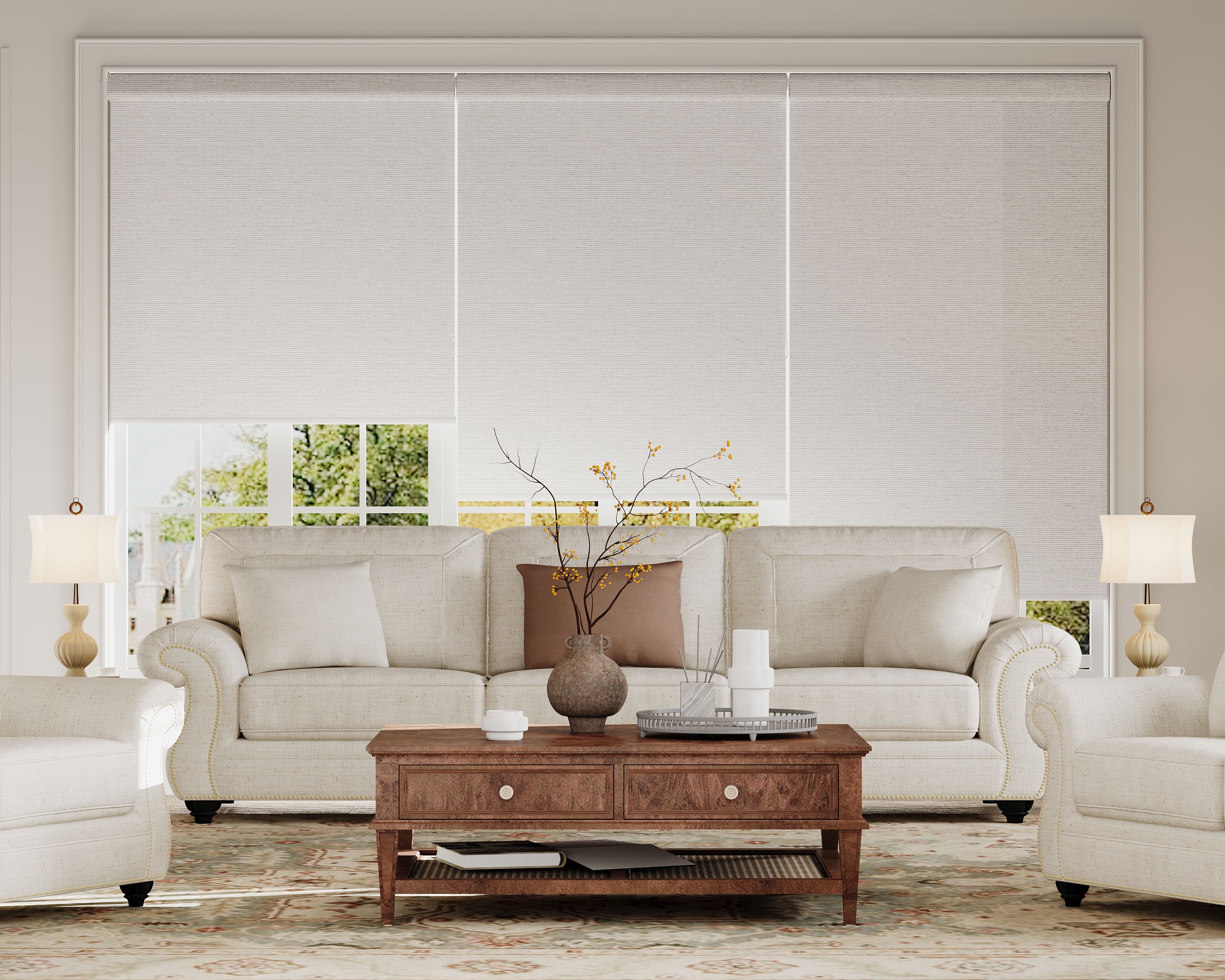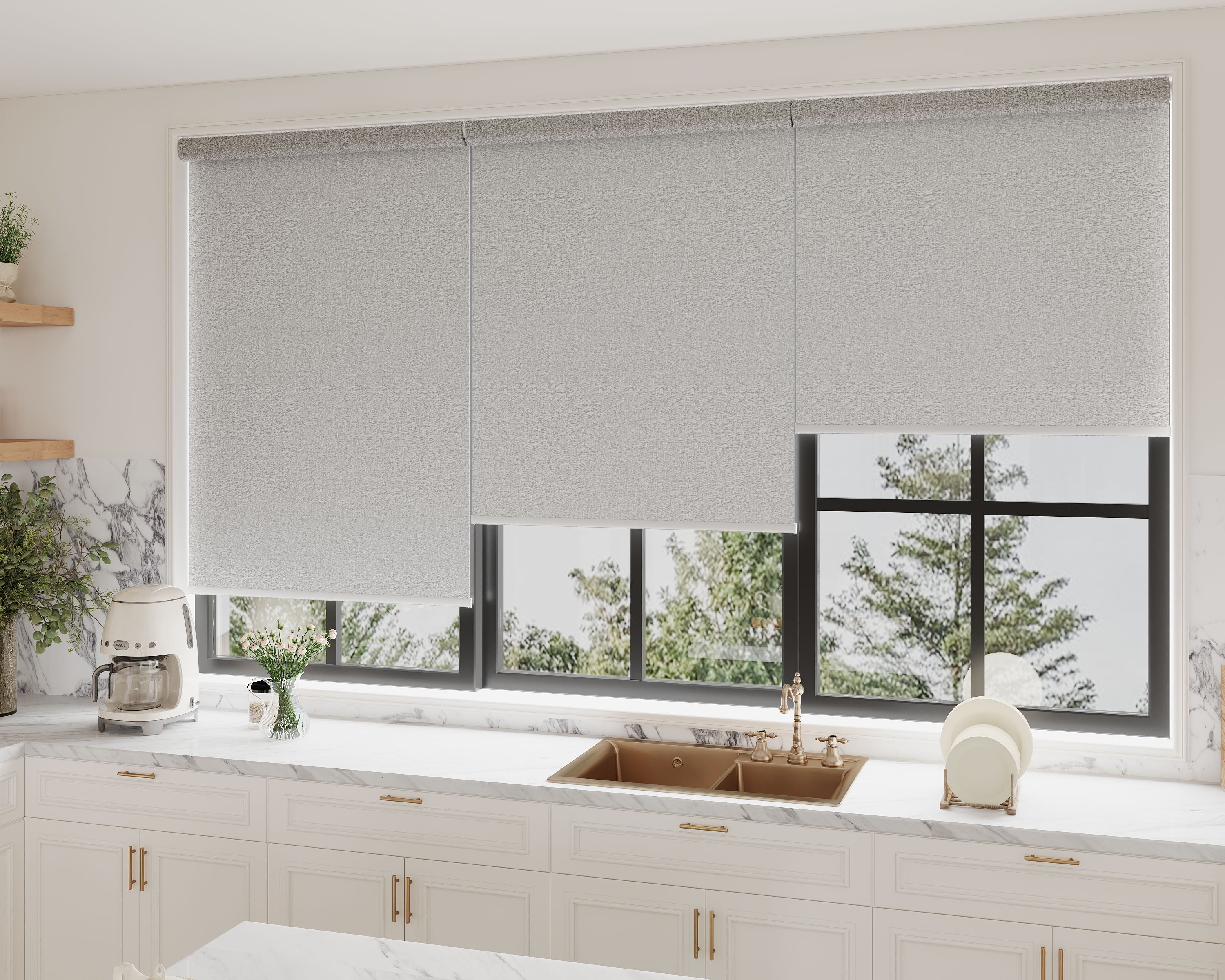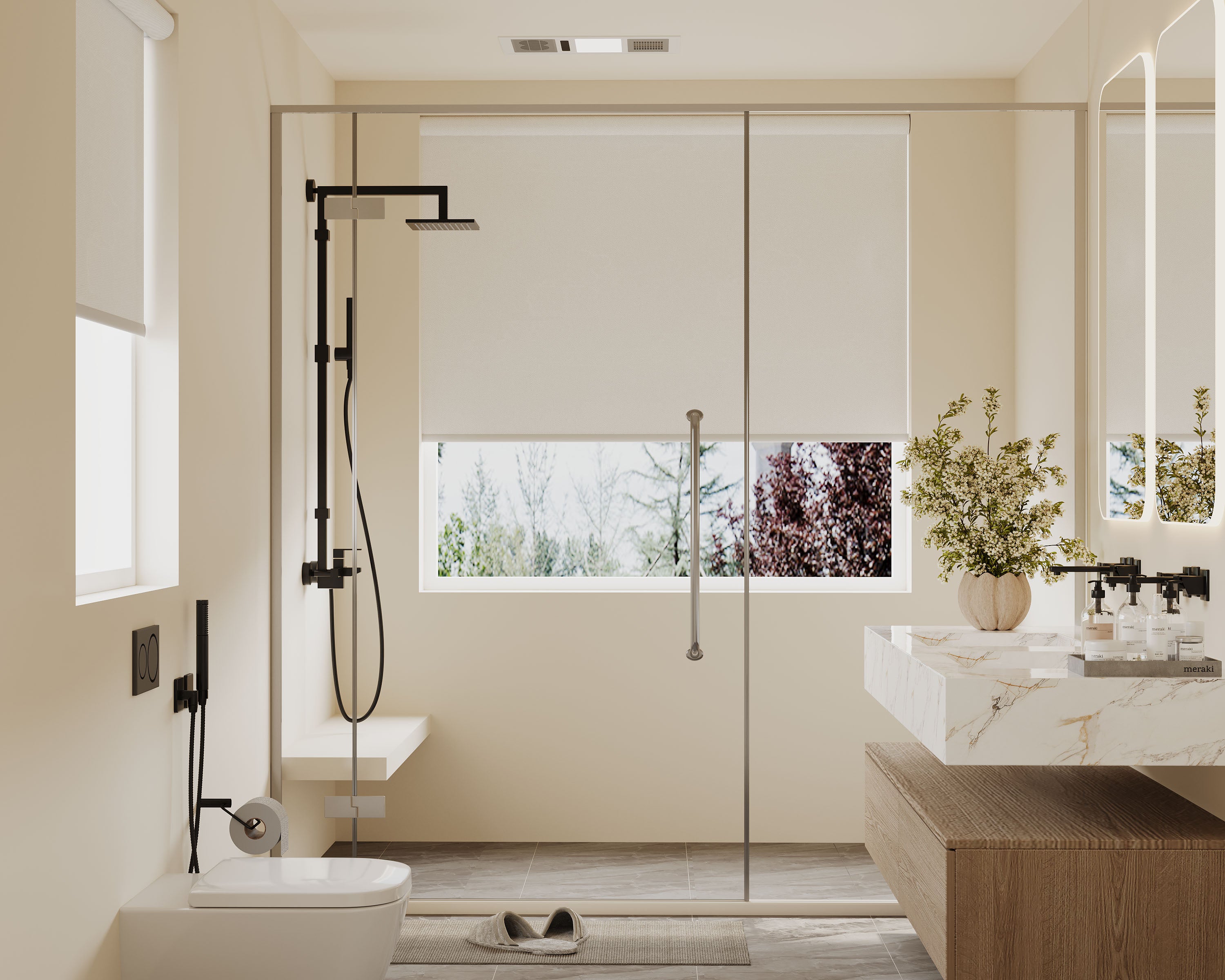Explore our top collections, including Roller Shades, Zebra Shades, and Blackout Shades.
Dealing with shallow-frame doors, windows, or cabinets is surprisingly frustrating when standard hardware just won’t fit. Finding the right slim-profile hardware helps us make the most of our limited space and keeps our rooms looking modern and upscale. No more putting up with bulky knobs or handles that stick out awkwardly or mess with our design vision.
Upgrading to sleek, premium-looking hardware solves those weird fit problems and adds polish to our home projects. These days, it’s not hard to find high-quality, stylish options that work for shallow frames. Whether we’re reviving a vintage piece or modernizing something new, slim-profile hardware just makes sense.
Key Takeaways
- Slim-profile hardware fixes shallow-frame fitting headaches.
- Stylish options keep things looking premium, not clunky.
- Simple swaps can totally change both function and style.
What Is a Shallow-Frame Problem?
A shallow-frame problem pops up when wall depth doesn’t match standard hardware sizes. Suddenly, our options for doors, windows, or cabinetry get limited.
Common Causes in Modern Spaces
Modern homes and renovations lean into thinner walls for that open vibe, better energy efficiency, or to squeeze out a few more inches of usable space. Older apartments and condos? Every inch is precious, so space-saving is a must.
Usually, thinner drywall, reduced stud depths, or retrofitting older frames with new hardware creates the problem. Even when we splurge on premium materials or minimalist trims, shallow frames can force us to compromise. Custom or pocket doors, flush finishes, or slide-in window frames all crank up the challenge of finding high-end hardware that actually fits.
Impact on Design and Functionality
Shallow frames limit our choices for door depth, trim, and insulation—sometimes pushing us toward slimmer, less solid hardware. That doesn’t just change the look: it can make a door feel lighter, affect soundproofing, or reduce how much light a window lets in.
We also have to watch how hardware sits in the wall—bulky handles, concealed hinges, or built-in shades might not fit at all. It’s tough to get that seamless, luxe look if the hardware sticks out instead of sitting flush. Sometimes installation is faster, but we might lose out on customization or key features.
The Need for Slim-Profile Hardware
Slim-profile hardware lets us get that sleek, modern look while making the most of small spaces. It nudges us to rethink how function and style can work in tight spots.
Maximizing Space Without Sacrificing Style
Homes keep shrinking, but our love for clever storage and eye-catching finishes isn’t going anywhere. When space is tight, slim-profile hardware helps us reclaim precious inches—think skinny kitchen drawers or low-profile door pulls that keep things neat.
We don’t want to ditch style for practicality. Modern slim hardware comes in all kinds of finishes—brushed nickel, matte black, you name it—so we get both design impact and subtlety. Using slim pieces lets us put the spotlight elsewhere, like a bold cabinet color, without the hardware stealing the show.
Key Advantages of Slim-Profile Hardware:
| Feature | Benefit |
|---|---|
| Compact dimensions | Extra usable space |
| Wide range of finishes | Matches nearly any décor |
| Streamlined silhouette | Modern, unobtrusive appearance |
It really comes down to making smart choices that balance form and function, especially with less room to work with.
Challenges With Traditional Hardware
Traditional hardware is sturdy, sure, but it can be bulky and kind of in-your-face. We’ve all smacked a hip on a chunky doorknob or caught a sleeve on a big handle.
Older options might stick out—literally and visually—in spaces where minimalism rules. Bulky pulls can crowd soft-close cabinets, block nearby drawers, or make tiny bathrooms feel even smaller.
If smooth surfaces and clean lines matter to us, standard hardware is a pain. Heavy shapes and clunky edges break up the flow, making it tough to get that seamless, magazine-worthy vibe. Swapping in slim-profile pieces solves these problems without gutting the whole room.
Choosing Premium-Looking Slim-Profile Hardware
Picking the right slim-profile hardware means thinking about both looks and practical stuff like material, finish, and type. If we want a space that feels high-end and works well, the details matter.
Best Materials for a Luxe Aesthetic
Material does a lot for how hardware looks and feels. Solid brass is a favorite for its weight and naturally rich color. It just feels good—substantial, like you upgraded for real.
Stainless steel is another solid pick, especially for modern vibes. It resists corrosion, so it stays sharp in kitchens and baths. For a bit of old-school charm, maybe bronze or matte black aluminum for something more subtle.
Here’s a quick look:
| Material | Appearance | Durability | Best For |
|---|---|---|---|
| Brass | Warm, luxe | High | Classic, modern |
| Stainless Steel | Sleek, cool | Very high | Minimalist, modern |
| Bronze | Rich, antique | High | Traditional, rustic |
| Aluminum | Matte, lightweight | Moderate | Contemporary, subtle |
Finishes That Elevate Any Room
Finish can turn plain hardware into a room’s highlight. Brushed nickel is a go-to for its soft shine and how well it hides fingerprints. Want something flashier? Polished chrome brings a mirror shine and fits both retro and modern spaces.
Matte black is perfect for a clean, contemporary look that goes with almost anything. If you like a bit of glam, antique brass or satin gold adds warmth and a touch of shine without being over-the-top. Good finishes last, so it’s worth making sure the plating is quality—cheap finishes chip and fade before you know it.
Pro tip: If you’re mixing finishes, stick to two or three per room. Any more and things get chaotic fast.
Hardware Types: From Handles to Hinges
Slim-profile hardware isn’t just about cabinet handles. It covers pulls, knobs, appliance handles, hinges, latches, and even door stops. For a unified look, match handles and hinges—not just the finish, but size and shape too.
Minimalist bar pulls and tab pulls are great for shallow cabinetry. On hidden doors or panels, try concealed hinges or push-to-open latches to skip external fittings. If you’re swapping old hardware, double-check the mounting size so the new pieces fit and don’t leave weird gaps.
Nobody wants a fancy kitchen with loose, mismatched handles. Picking the right hardware type keeps everything sharp and working right.
Installation Tips for Shallow Frames
When we’re putting in slim-profile hardware on shallow frames, precision matters. Small details make the difference between a sleek finish and a headache.
Getting Accurate Measurements
Measure twice—nobody wants extra holes in their walls. Use a solid steel tape or a digital caliper for the tiny stuff. With tight frames, even a millimeter can mean a wobbly fit or an annoying gap.
A trick we like: Mark the spot with painter’s tape and draw guides, so you don’t scratch up the frame. For inside-mount installs, double-check the depth to make sure the hardware sits flush. Watch for things like sills or uneven spots, since those can throw off the whole process.
We jot measurements in a notebook or, if we’re feeling risky, right on the tape. Having numbers handy means less guessing and less re-measuring.
Tools and Techniques for a Snug Fit
Nothing ruins a clean look faster than rattly hardware, so a tight fit is key. For shallow frames, these tools are always nearby:
- Level
- Drill with sharp, small bits
- Screwdriver
- Wood shims or rubber spacers
- Fine sandpaper
- Small vacuum (because, dust happens)
Drill a pilot hole just a bit smaller than the screw to avoid splitting the frame. If it’s wobbly, a rubber spacer or a tiny shim helps. Sandpaper smooths rough edges so hardware sits flush.
A handheld level is a must—one quick check saves you from crooked hardware that’ll bug you forever. When tightening, go gentle; shallow frames can crack if you overdo it.
Style Inspirations Using Slim-Profile Hardware
Slim-profile hardware lets us blend style with smart design in every room. The right pieces can make a space look timeless, sleek, or even a little daring—without bulking up frames or blowing the budget.
Minimalist Designs for Modern Homes
There’s something about clean lines and uncluttered details that just works. Slim-profile hardware like handleless pulls, skinny bar handles, and flush-mount hinges is right at home in minimalist spaces. In kitchens, streamlined pulls in matte black, brushed nickel, or soft chrome let the cabinets do the talking.
Table: Popular Slim-Profile Finishes for Modern Spaces
| Finish | Features |
|---|---|
| Matte Black | Low-maintenance, seamless look |
| Brushed Nickel | Subtle shine, resists fingerprints |
| Soft Chrome | Crisp, cool tone, versatile |
Using subtle, slim handles on storage and furniture keeps things from looking busy. Sometimes less really is more. Minimalist levers on doors add a hint of character without shouting for attention.
Transitional Styles That Wow
Transitional style sits right between classic and modern, and slim hardware fits in beautifully. Think soft gold cup pulls, slim bar handles in brushed brass, or chrome knobs with shaker cabinets. These choices keep things interesting but not overdone.
If we’re updating older spaces, slim-profile hardware bridges the gap between timeless and trendy. Mixing slim pulls with classic touches—like crown molding or paneled doors—gives a boutique feel that’s still warm. The result? A room that feels current but not cold.
Slim doesn’t mean boring. Try oval, rectangular, or even offbeat pulls for visual interest. A little texture or a unique finish lets us put our own stamp on transitional style.
Maintaining the Premium Look Over Time
Slim-profile hardware can keep that crisp, upscale vibe if we build a few good habits. Nicks, fingerprints, and dulling sneak up on us, but a little attention keeps things looking sharp.
Cleaning and Care for Different Finishes
Not all finishes play by the same rules. With brushed nickel, just grab a soft cloth, dampen it with water, and dry it off. Harsh chemicals? Honestly, they’re more trouble than they’re worth—think clouding or pitting, so maybe skip the fancy cleaners.
Matte black and powder-coated finishes hide smudges longer, but when fingerprints finally show, a microfiber cloth and a bit of soapy water usually do the trick. For polished chrome or brass, mix equal parts vinegar and water to tackle streaks. Never use abrasive sponges—they’ll scratch up the surface, and there’s no coming back from that.
A quick dusting once a week goes a long way. Here’s a cheat sheet for what works and what to avoid:
| Finish | Cleaner Type | Avoid |
|---|---|---|
| Brushed Nickel | Mild soap, water | Bleach, acids, scrubs |
| Matte Black | Microfiber, water | Abrasives, ammonia |
| Polished Chrome | Vinegar, water | Steel wool |
| Powder Coated | Dish soap, water | Solvents, rough cloths |
Avoiding Common Wear and Tear
Life’s rough on slim hardware, especially in busy spots like kitchens and bathrooms. You can keep things looking sharp by tightening loose screws, aligning handles, and fixing wobbly pulls before they turn into bigger problems.
Watch out for rings, keys, or belt buckles—they’ll scuff up the finish if you’re not careful. When installing cabinet or door hardware, toss on some soft-close bumpers to cut down on accidental banging.
Handles aren’t meant for heavy bags, so try not to hang stuff on them. Wipe away moisture after showers or spills to help fight off corrosion, especially on metals. Most damage creeps in when we ignore the little stuff, not just from everyday use.
Innovative Brands and Products to Watch
Looking for shallow-frame hardware that still feels high-end? A few brands keep popping up. Here’s what stands out about them, at least for us.
Emtek has a surprisingly broad selection of low-profile handles and pulls. Their mix-and-match approach means you can get a little creative, even in tight spaces.
Baldwin leans into premium finishes but still manages a slim backplate line. Their satin and polished options actually fit well on apartment doors where every millimeter counts.
If you’re after a modern look, Sugatsune brings that Japanese craftsmanship to compact hardware. Minimalist drawer pulls and hinges—they’re functional and, honestly, pretty elegant.
Some models worth a closer look:
| Brand | Product Line | Notable Feature |
|---|---|---|
| Emtek | Modern Rectangular | Slim profile, custom mix |
| Baldwin | Estate Series | Multiple finish options |
| Sugatsune | L-2700 Series | Minimalist, robust build |
| Hafele | Thin Handle Series | Affordable, simple design |
We’ve had good luck with Hafele for basic, budget-friendly skinny handles. Not flashy, but solid.
More brands are jumping on the slim hardware trend, but these names have the design cred and real-world reliability we want for a shallow-frame project.
Common Mistakes to Avoid
Shallow-frame hardware can trip us up if we’re not careful. Here are some common pitfalls and how to dodge them:
1. Overlooking Compatibility
It’s easy to get excited about a good-looking handle or hinge and forget to check if it’s actually made for slim profiles. Not every piece fits shallow frames, and forcing the wrong one can wreck your cabinets.
2. Neglecting Sturdiness
Sleek is great, but flimsy hardware just won’t hold up. Make sure to pick durable materials, especially for high-use spots like pantry doors or drawers you open every day.
Common Slip-Ups Table
| Mistake | Why It's a Problem |
|---|---|
| Wrong screw length | Can poke through or fail to anchor |
| Ignoring finish compatibility | May cause rust or discoloration |
| Skipping measurements | Leads to ill-fitting, sloppy looks |
3. Forgetting the Finish
Don’t assume all silvers or golds match. Mixing mismatched finishes from different brands can make the end result look accidental, not intentional.
4. Not Testing Functionality
Before you screw everything in, check that handles or pulls actually work well with your fingers and the frame depth. If the grip feels awkward, it’s worth swapping out.
Measure twice, match carefully, and pick hardware that nails both style and reliability.
Frequently Asked Questions
You really don’t have to give up looks for functionality with slim-profile racks and enclosures. Modern designs blend right into home setups, keep equipment cool, and somehow make tight spaces feel less cramped.
What innovative solutions are available for incorporating slim-profile racks into home decor?
Wall-mounted racks with customizable covers can keep things subtle and stylish. Some racks have door panels that double as acoustic dampeners or even as decor.
Floating racks with hidden wiring or cabinets that look more like furniture also help keep living areas looking neat.
Can you achieve a high-end aesthetic with low-profile server cabinets in a small space?
Definitely. Matte black or brushed metal finishes add a premium touch, and glass doors keep things looking modern instead of industrial.
Cabinets with hidden hinges or built-in LED lighting make everything sleeker without hogging space.
What are some key features to look for in a premium, space-saving rack enclosure for home use?
Look for tool-less assembly, good sound dampening, and cable management channels that actually make sense. Proper airflow design is crucial, but so is a compact footprint.
Lockable doors and smart vent panels add security and function without making the rack look oversized.
How do you prevent slim doors from closing by themselves and maintain a sleek look?
Try discreet magnetic stops or soft-close hinges to keep doors from swinging shut. Some racks have adjustable tension systems inside the frame—no more chasing after runaway cabinet doors.
Quality hardware helps doors line up just right, so you avoid that crooked, cheap look.
Are there enclosed server racks that offer effective cooling without compromising on style?
Absolutely. We’ve seen racks with mesh panels that keep airflow moving and still blend with the enclosure. Some models use temperature-controlled fans or hidden vents, so cooling works well without dominating the room’s vibe.
A few even use tinted glass and brushed aluminum—honestly, you could put them in a designer living room and they wouldn’t look out of place.
What's the best way to integrate a home server rack without disrupting interior design?
You could tuck a rack inside a custom cabinet that blends in with your other furniture, or maybe try sliding panels to hide the hardware when you don’t need to see it. Paintable front covers and subtle handles can help the equipment mesh with the room’s vibe, though honestly, it takes a bit of trial and error to get it just right.
Stashing the rack in an underused closet or a quiet corner keeps everything running smoothly, and you don’t have to stare at blinking lights while you relax.
